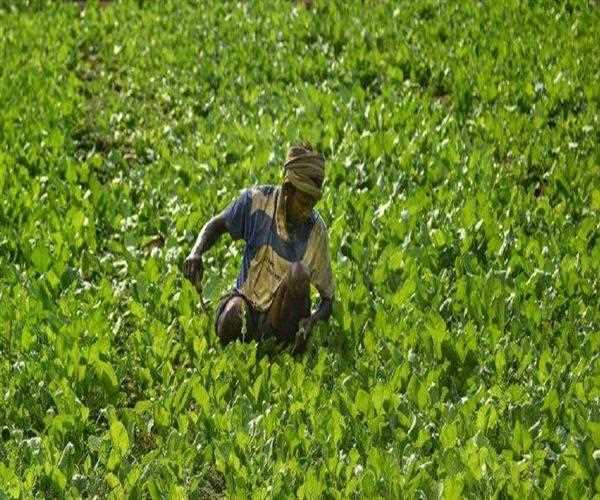Search here

18-May-2020
Ray of Hope in Agriculture Sector During COVID-19 Pandemic
After enumerating the steps taken in the past, Finance Minister Nirmala Sitharaman has taken eleven specific measures in her series of press conferences on Friday; Apart from this, he also announced two measures on Thursday to help farmers as part of the Rs 20 lakh crore economic package released for Covid-19.
But it did not have any special measures to provide direct cash transfers in the hands of distressed farmers. However, most of these measures are already included in the budget proposals.
Sitharaman also announced three measures to ease agricultural marketing and to remove stock limits under the Essential Commodities Act, a move that would help the processing industry and wholesale trade.
Except in extraordinary times, when disaster strikes or when the prices of perishable crops go up by 100 percent and grain prices by fifty percent, traders will no longer be hoarding.
A central law providing several options for farmers to make their products available in the market and a law to facilitate contract farming will be introduced soon.
One lakh crore rupees fund has been provided to strengthen infrastructure like a post-harvest cold storage chain. Similarly, an allocation of Rs 20,000 crore has been announced for marine and inland (domestic) fisheries.
Apart from this, Rs 15,000 crore has been announced for dairy infrastructure and other ongoing schemes, and Rs 13,343 crore for the prevention of hoof and oral disease. 100% of all animals will be vaccinated, which has been approved by the cabinet in May 2019.
Plans have also been announced for medicinal plants, honey beekeeping, nutritious food in micro-food enterprises, health and welfare, etc. These are, of course, important measures and necessary to boost the rural economy, and will help farmers, fishermen, and milk producers, but these are steps that are part of an ongoing process to improve long-term agricultural activities.
In the current crisis when economic activity is severely stalled due to lockdown, only agriculture remains the lifeline. In the true sense, agriculture has strengthened its image as the mainstay of the Indian economy.
But urban demand has come down due to the closure of restaurants and dhabas for almost 50 days, which has suffered heavy losses to agriculture, but it has continued to supply.
There have been reports that due to regular supply disruptions, the farmers had to milk on the streets, the chickens had to be burnt alive, the flowers had to be plowed, the vegetables had to be thrown in front of the animals and the prices of all the crops were almost at the lowest level in the market. Gone, as the supply chain was regularly disrupted.
As per estimates, the poultry industry has suffered a loss of Rs 15,000 crore to vegetable growers, Rs 10,000 crore to milk producers and Rs 15,000 crore to flower growers, nurseries, fruit growers and fishermen.
Despite all odds, farmers have harvested about 106 million tonnes of wheat, have already sown more Kharif crops, and are also getting ready to plant paddy in the coming weeks. The agricultural sector is already in crisis, it was expected that the immediate relief package would partially compensate them for the loss, and provide incentives for sowing.
Here was an opportunity for the government to stand with the farmers in crisis and provide a more economic stimulus package. Farmers urgently need a relief package, and providing more cash in their hands will also help generate more demand.
READ HERE MORE : Food Crisis For Sure In Corona Pandemic
Even earlier, when the finance minister announced a package of Rs 1.70 lakh crore for farmers and other marginal sections of the society, the sole commitment for farmers was to pay an installment of Rs 2,000 under the PM-Kisan scheme, which owed them Was only Under the Pradhan Mantri Kisan Yojana, farmers get direct transfer of Rs 6,000 per year in three installments.
The first installment of the April-June quarter was outstanding. In other words, the farmers have so far been deprived of any direct support. I propose that PM-Kisan should provide direct income transfer of Rs 10,000 per farmer, including share-cropped farmers, without delay in allocation.
In addition, farmers should be given a bonus of Rs 100 per quintal on the minimum support price for wheat procurement, given the difficulties they faced while harvesting and procuring wheat. Given that many lakhs of migrant workers have returned to their villages, agriculture needs to be further strengthened, so that the additional workforce can be accommodated in farming.
This epidemic provides an opportunity to realize the Prime Minister's self-reliant India campaign. Revitalizing agriculture and making farming economically viable is the basis of this campaign. The additional allocation of Rs 40,000 crore for MNREGA is a welcome move. It is also time to take lessons from other countries.
The United States has given $ 3 billion in aid to farmers to buy vegetables, fruits, and milk directly and supply them to consumers. A similar strategy can be worked out for perishable crops in India. It is time for the government to take such steps that benefit the farmers. After all, farmers have demonstrated that they are the real backbone of the economy in these difficult times.

Content Writer/Journalist
I am a content writter !
Join Our Newsletter
Subscribe to our newsletter to receive emails about new views posts, releases and updates.
Copyright 2010 - 2025 MindStick Software Pvt. Ltd. All Rights Reserved Privacy Policy | Terms & Conditions | Cookie Policy